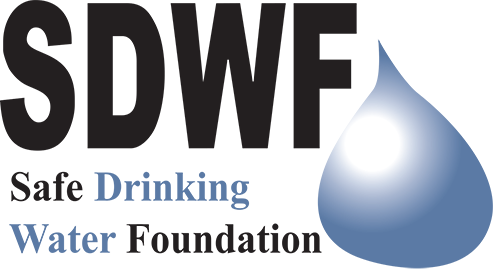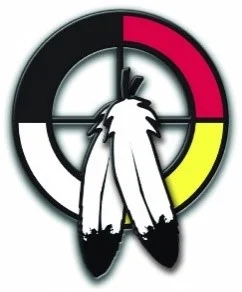Medicine Wheel
“Water finds significance in the lives of First Nations people on personal, community, clan, national, and spiritual levels. Water is understood as a living force which must be protected and nurtured; it is not a commodity to be bought and sold”. - Deborah McGregor (water protector from Ontario)
Background information
All around Turtle Island (North America), the Medicine Wheel has been used as a teaching tool for many Indigenous Nations. Medicine Wheels consist of many different aspects that connect humans and all living things to the Earth.
The Medicine Wheel was placed on Turtle Island by people thousands of years ago. For many Nations, the Medicine Wheel, is one of the oldest things we have. The four directions are incorporated to honour them and to seek knowledge from those four directions. We get power from those four directions. They pull positives into our lives. When we call out to them in prayer, they will bring things to us. The four directions came with creation; we did not. We were the last things created (we were created after rocks and water). In addition, this is a garden; it is coming from mother earth, so that is where the four directions are coming from. (Medicine Wheel Teachings, 2016)
The Medicine Wheel is round to represent the Circle of Life. Human beings, like many organisms, enter their existence dependent on others as babies, grow and discover during their youth, experience life and learn while adults, and age and pass on their knowledge as elders.
The central cross represents how all things in the natural world come in fours. First Nations peoples believe that the Creator made many things that are shaped or occur in the form of a circle. This includes the four seasons, the four directions, the four entities above the Earth (sun, moon, sky and stars), four kind of plants (grasses, vegetables, trees and flowers), four kinds of animals (insects, those that live in water/sky, two-legged and four-legged animals that live on land, and humans), and the four stages of life (infancy, childhood, adulthood, and old age). The plant and animal symbols are useful to us as medicines and guardians and act to fulfill our spiritual and personal well-being. The reason this object is called a “Medicine Wheel” is due to the strong spiritual healing present when all of the representative symbols are in balance and are united. The Medicine Wheel serves to remind us of our place in this world, how we each have an impact through our actions and how we are connected in many ways to our natural world. Negative impacts would result if we were to change the balance of things, which eventually will be felt by all. If, however, humans care for the Earth and cherish all within it, we can create a healthy worldwide ecosystem where all can benefit. (The Anishinabek Medicine Wheel – What Does It Mean?, 2017)
This lesson will be designed for younger grades to grasp the smaller concepts of the medicine wheel. This will help students, when they are older, to expand their knowledge. Students will explore the many ways in which the four elements: fire, rock, water, and wind, affect our daily lives and all the living things around us. These elements are very spiritually significant and, thus, considered to be living things to First Nations people because they are life sustaining. They are recognized in many ways including many celebrations and ceremonies that are believed to help with the survival of their nation. These elements are considered to have spirits similar to humans. (Zacharias, 2016)
Lesson 1: Medicine Wheel Teachings
Grade: K-2 (Science, Social Studies, Health, English Language Arts, Art Education, Math)
Topic: Medicine Wheel and the Four Elements (Rock, Wind, Water, and Fire)
Time: 60 minutes (120 minutes if Elder is asked to visit the classroom to speak about the Medicine Wheel)
Space requirement: Classroom/outside environment
Materials: Smartboard or computer and projector, paper, markers, Elder (if possible), pictures
Objectives: Students will explore the many ways in which the four elements: Fire, rock, water, and wind, affect our daily lives and all the living things around us, as well as the importance of the Medicine Wheel to First Nations People.
Directions/Procedures:
1. Draw a big circle in the centre of the board (or chart paper) and divide it into four equal parts like a medicine wheel. Ask students to inquire about it (this will activate prior knowledge).
2. The teacher shows the students the Medicine Wheel Teachings PowerPoint.
3. Get students ready to go outside for a 15-minute walk. During this walk, you will describe what you notice about the natural world, especially the four elements – fire, rock, water, wind. If there is no water nearby then the teacher could show students a container of water and talk about water after they come in from their walk. For fire, the teacher can light a candle (if permissible, otherwise, the teacher can turn on an LED candle). During this walk, you would use the Background information provided to talk about the different elements around you and the importance of them to First Nations people. Examine how the four elements affect our daily lives, and all living things around us.
Fire is needed for survival; it is the heart of people. It provides us with life, warmth, & protection. We all have fire within ourselves, within our families, and within our communities. Fire cleanses and renews life.
Rocks are considered to be the wisest of the four elements because of all that they have seen: floods, drought, and fire. They possess a lot of knowledge and that is why they are used in the sweat lodges. Stones that have spirits within them are very heavy and cannot be broken by humans. When the spirit has left, the rock becomes light and easy to break apart.
Water is one of the four elements in the Medicine Wheel. It provides life for all living things. It is life‐ giving and life‐sustaining. Water is, therefore, an important part of many ceremonies such as sweat lodges.
Wind - The wind is here to protect us. Negatives are blown away. It is important to our lives and needs to be recognized as our protector. The wind also helps keep the soil clean by blowing the used topsoil away for new soil to grow.
4. Have students collect one item each during the walk as this is going to lead into the activity when you get back to the classroom (be careful and use gloves if need be or help the students). Students could collect leaves, rocks, branches, etc. This is for the story bag that is the activity.
5. Do the Story-Bag Activity:
Activity: Story-Bag Activity
Materials: Items collected by students on nature walk, bag, pen & paper to record students’ responses. Remember to link the story to First Nations’ worldviews concerning the Medicine Wheel and the elements.
Step 1) Have students place all of their items inside the bag. Then, have the students sit in a circle. Talk to the students about the fact that they are sitting in a circle, the same shape as a Medicine Wheel.
Step 2) Ask students what kind of story we could create about the four elements based on the items in the bag. (It would be a good idea for the teacher to have thought of this ahead of time in case the students do not come up with ideas. For example: Let’s make a story up about a boy who is saving the water in his community or let’s make a story up about girl who found a very large rock.)
Step 3) The first student is chosen and creates the beginning of the story. It is okay if the teacher helps with this part, as it could be difficult for younger students to come up with stories.
Step 4) Go around the circle until every student has had a turn adding a part to the story. At the end of the lesson, the teacher will edit and organize (or this can be done as a class) the story and later the students will read it as a class.
*** It is important to remind students to keep in mind how the items they chose are connected to life and to the four elements. ***
Evaluation: Students can be evaluated based on their participation in the lesson and the part of the story they added. A checklist can be used for this (see attached document).
Optional Extension Activities:
Invite a First Nations Elder or Knowledge Keeper into your classroom to teach your students about the Medicine Wheel after having completed this lesson (so that the students have some background knowledge first).
Use page 25 The Office of the Treaty Commissioner’s Treaty Resource Guide for Kindergarten (August 2008) (http://www.otc.ca/public/uploads/resource_photo/Kindergarten_STI.pdf) to have students make “The Circle Book” (Appendix B).
Read a First Nations creation story from a local First Nation. Several of these stories can be found on the Canadian Museum of History’s website here: https://www.historymuseum.ca/cmc/exhibitions/aborig/fp/fpz2f02e.shtml (click on the arrows to move to the next pages). After the Glooscap, Sky Woman and The Birth of Good and Evil origin stories there is Wealth of Stories, which describe Nanabozho’s transformations of the Anishnaabe world, how Raven stole the light from a house near the Pacific Coast and spilled it all over the world, Kiviuk’s journeys along the Arctic shore, and Jipijkam’s sudden appearances on the East Coast.
Especially for kindergarten students, copies of the Pictures from PowerPoint document can be printed and cut out to be a sorting activity.
Teachers can use a pre-made Medicine Wheel as a teaching tool and sticky-tac images on it as they teach. (for example, when speaking about fire the image of fire goes in one quadrant, when speaking about water the image of water is placed in another quadrant). It would look something like this (but larger, and it can be coloured ahead of time):
Resources
The Anishinabek Medicine Wheel – What Does It Mean? 2017. Retrieved from http://lowerthames-conservation.on.ca/wp-content/uploads/2014/06/BAY-The-Anishinabek-Medicine-Wheel.pdf
Four Direction Medicine Wheel. University of Regina. 2016 https://www.uregina.ca/science/biology/people/faculty-research/gendron-fidji/documents-fidj/Medicine-Wheel-Booklet.pdf
McGregor, D. Anishnaabe-Kwe, Traditional Knowledge, and Water Protection
Canadian Woman Studies, Vol. 26, No. 3/4, Indigenous Women in Canada: the Voices of First Nations, Inuit and Métis Women, Winter/Spring, 2008, pp. 26-30. Retrieved from https://cws.journals.yorku.ca/index.php/cws/article/viewFile/22109/20763
Medicine Wheel elements/directions for younger grade. Retrieved from https://www.youtube.com/watch?v=c63PVyPB_zw (YouTube video)



